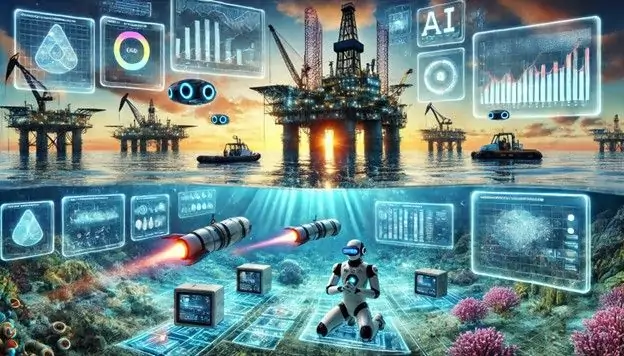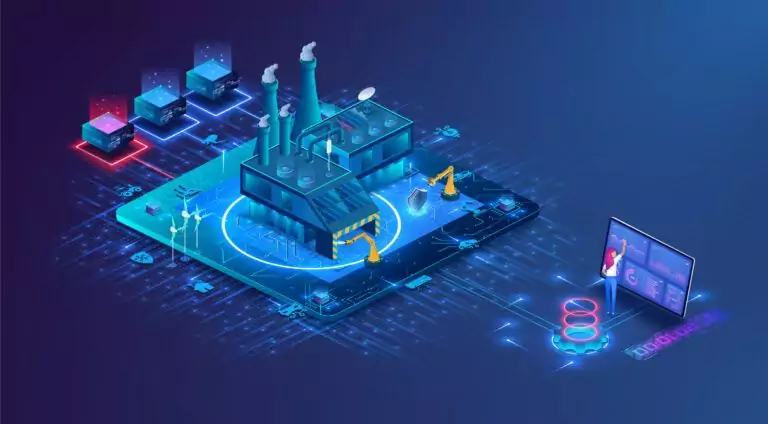
System integration is the process of combining different subsystems or components into a single system. In industrial engineering, system integration is often refers to the integration of manufacturing systems and business systems.
The concept of system integration has been around for centuries. The ancient Egyptians are believed to have used a form of system integration when they built the pyramids. However, it was only during the industrial revolution that system integration began to be widely used in engineering.
System integration became increasingly important in the early 20th century as factories became more complex. To keep up with mass production demands, factories began using conveyor belts, assembly lines, and other automated technologies. This led to a need for engineers who could design and oversee the construction of these complex systems.
The term “systems engineering” was first coined by Walter Shewhart in 1941. Shewhart defined systems engineering as “the art and science of translating customer need into technical requirements for a product or service” (SEBoK, 2013). Since then, systems engineering has continued to evolve and grow in importance.
Today, system integration is essential to many industries, including industrial (oil and gas) engineering, automotive manufacturing, aerospace engineering, and healthcare. With the ever-growing complexity of modern systems, the need for skilled system integrators will continue to rise in the coming years.
Importance of System Integration in Industrial Engineering
System Integration brings together various subsystems or components to achieve a common goal. In industrial engineering, system integration is used to streamline production processes and optimize resources.
The importance of system integration in industrial engineering cannot be overstated. Industrial engineers can create a cohesive and efficient work environment by integrating different systems. This saves time and money and improves safety and quality control.
In North America, system integration is essential for keeping up with the competition. With so many industries operating globally, companies in North America must adopt system integration to remain competitive. By doing so, they will be able to improve their bottom line and keep up with the changing landscape of modern manufacturing.
Overview of Industrial Engineering in North America
System integration is the process of combining various component parts or subsystems into a larger whole. In industrial engineering, system integration refers to coordinating and managing people, equipment, and other resources to achieve maximum efficiency in an industrial or manufacturing setting.

Industrial engineering is a field that has its roots in the military and defense industries, where optimizing resources was critical to success on the battlefield. Industrial engineers play a vital role in many industries, from healthcare to transportation. In North America, industrial engineers are often responsible for overseeing production lines and developing new ways to increase efficiency and productivity.
There are several key components to consider when integrating systems in an industrial setting. These include:
- Workflow: How tasks are completed, from start to finish.
- Equipment: The machines and tools that are used to complete tasks.
- Information: Data is collected and used to decide how best to utilize resources.
- People: The workers who operate within the system.
An adequate system integration plan will consider all these factors and find ways to optimize them so that they work together seamlessly. When done correctly, system integration can lead to increased efficiency and productivity in an industrial setting.
Types of System Integration in Industrial Engineering
System integration in industrial engineering brings together various subsystems and components to create a cohesive whole. It is often used in manufacturing and production, where it can help streamline processes and improve efficiency.
Several different types of system integration can be used in industrial engineering, each with its advantages and disadvantages.
One type of system integration is known as direct integration. This involves directly connecting two or more systems without intermediate steps or layers. Direct integration can be very efficient since it minimizes the need for data conversion or other processes that can slow down communication between systems. However, it can also be challenging to implement since it requires high compatibility between systems.
Another type of system integration is known as middleware integration. This involves using software that acts as an intermediary between different systems. Middleware can provide many benefits, such as improved compatibility between systems and increased flexibility in exchanging data. However, it can also add complexity to a method and make it more challenging to manage.
Many other types of system integration can be used in industrial engineering, including web services, enterprise application integration, and message-oriented middleware. Each has its own advantages and disadvantages, so choosing the right type of integration for your needs is essential.
Benefits of System Integration in Industrial Engineering
The modern industrial engineer in North America is tasked with many responsibilities. They must be able to manage ever-changing production schedules, work within tight budgets, and find ways to improve efficiency and quality control. System integration can help the industrial engineer meet these challenges by providing a way to connect all aspects of the manufacturing process.
System integration can provide real-time data on production line performance, which can help identify areas of inefficiency. This data can be used to adjust production schedules or make changes to the manufacturing process. Additionally, system integration can help reduce costs by automating tasks traditionally done manually. For example, material handling tasks can be automated using robotics, which can free up employees for other jobs.
Ultimately, system integration can help industrial engineers become more efficient and effective. By connecting all aspects of the manufacturing process, system integration provides a wealth of data that can be used to make informed decisions about production schedules, quality control, and cost reduction.
Challenges in Implementing System Integration in Industrial Engineering
System integration is the process of combining different subsystems or components into a single system. It is a key part of many industrial engineering projects, as it allows for the efficient and effective use of resources. However, some challenges can arise when implementing system integration in industrial engineering.
One challenge is ensuring that all subsystems or components work together seamlessly. This can be difficult to achieve, as each element may have specific requirements or interface standards. Another challenge is ensuring that the system can meet the needs of the users or customers. This requires careful planning and coordination between all the different teams involved in the project.
Other challenges can include maintaining high levels of performance and reliability while keeping costs under control. Additionally, it is essential to consider scalability when designing a system, as this will be important if the system needs to be expanded.
Case Studies of System Integration in Industrial Engineering
Regarding system integration in industrial engineering, North America has some of the world’s most advanced and sophisticated facilities. From the Ford River Rouge Complex in Dearborn, Michigan, to the Maersk Advanced Manufacturing Facility in Charleston, South Carolina, these are just a few examples of how North American companies are using system integration to stay ahead of the competition.
System integration is critical to maintaining a competitive edge in today’s ever-changing global marketplace. By integrating different systems and technologies, companies can improve efficiency and productivity while reducing costs. In addition, system integration can help companies to better utilize their resources and optimize their operations.
North American companies are leading the way in system integration. Through innovative approaches and cutting-edge technology, they can create a competitive advantage that is difficult for other regions to match. As the global economy continues to evolve, system integration will become even more critical for companies in North America seeking to maintain their position as leaders in the marketplace.

Future of System Integration in Industrial Engineering
The future of system integration in industrial engineering in North America is exciting. With the advent of new technologies, the possibilities for improvement are endless. Here are some of the things that we can expect to see in the future:
- Increased use of robotics and automation: Robotics and automation are already playing a significant role in manufacturing, but their use is expected to increase even further in the future. This will help to improve efficiency and accuracy while reducing labor costs.
- More data-driven decision-making: With access to more data than ever, industrial engineers can make better decisions about optimizing systems. Data analytics will become an increasingly important tool in this process.
- Improved sustainability: As sustainability becomes more important to businesses and consumers, industrial engineers will play a key role in developing more sustainable systems. This could involve anything from reducing waste to designing energy-efficient factories.
- Greater focus on customer experience: In the past, industrial engineering primarily focused on optimizing production processes. However, there is an increasing trend toward focusing on the customer experience. This means considering factors such as ergonomics and user-friendliness when designing systems.
- Expanded use of technology: The use of technology will only increase in industrial engineering. This includes everything from using sensors and cameras for monitoring purposes to using 3D printing for prototyping and manufacturing products.
Conclusion
Integrating industrial and engineering systems in North America have challenged many organizations. There are several reasons for this, including the different maturity levels of the two industries, the various regulatory regimes, and the different approaches to technology development and adoption. However, there are several advantages to integrating these two industries, including sharing best practices, improving efficiency and quality, and reducing costs.
Planning a system integration project?
Vista Projects is an integrated engineering services firm able to assist with your system integration projects. With offices in Calgary, Alberta, and Houston, Texas, we help clients with customised system integration and engineering consulting across all core disciplines. Reach out today and someone from our sales team will talk to you about our engineering solutions!








